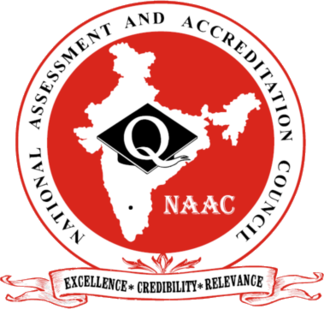UGC Enlisted CPE (College with Potential For Excellence) NAAC Accredited B+
One of the most prestigious colleges in the area, Government Post Graduate College Una (H.P.), has a freshly founded department called Department of Environmental Science. The biotic and abiotic components of an environment build it up. Growing consumer demand, greed, and over-exploitation of the environment result in environmental degradation and a loss of the environment’s inherent integrity. The many environmental realms and their ecological functions are harmed by unsustainable industrial growth, uncontrolled infrastructure development, contaminated effluent discharge into water bodies, agricultural runoff containing synthetic chemicals, and deforestation. Our Vedas make clear reference to protecting the environment by maintaining a harmonious relationship between God, Nature, and Man. As an illustration, the RigVeda discusses the five fundamental elements of Earth, Water, Air, Fire, and Space. The foundation of life is made up of these five elements. While Atharva Veda views Earth as the Mother and her creations as her offspring, Yajur Veda offers respect and peace to all aspects of Mother Earth. Our Puranas also discuss the environment and how to conserve it. The Varaha Purana recommends conventional plantation as a path to heaven.
“माता भूमि पुत्रोऽहं पृथीव्या:”
ये धरती हमारी माता है और हम इसके पुत्र है।
Source: अथर्ववेद, भूमिसूक्त 12.1.12
Faculty Details
Dr. Varun Dhiman, Assistant Professor, Department of Environmental Science, GC Una
UGC-NET , Ph.D.(Environmental Science)
Course Content
COURSE: ENVS2AECC2 ENVIRONMENT SCIENCE (THEORY)
Year end Examination: 100 marks
Note: The Examiner will set a total of nine (9) questions covering all topics/units of the prescribed course by setting at least two questions from each unit. Out of the nine questions, one question containing ten (10) short-answer type questions of two marks each that will cover entire course will compulsory. The candidate will attempt a total of five questions (one from each unit) including the compulsory question. All questions will carry equal marks.
Unit 1
Introduction to environmental studies & Ecosystems: Multidisciplinary nature of environmental studies: Scope and importance; what is an ecosystem? :Structure and function of ecosystem, Energy flow in an ecosystem, food chains, food webs and ecological succession, Forest ecosystem, Grassland ecosystem, Desert ecosystem, Aquatic ecosystems; Levels of biological diversity: genetic, species and ecosystem diversity, Biogeographic zones of India, Biodiversity patterns and global biodiversity hot spots, India as a mega-biodiversity nation, Endangered and endemic species of India, Threats to biodiversity, Habitat loss, poaching of wildlife, man-wildlife conflicts, biological invasions, Conservation of biodiversity, In-situ and Ex-situ conservation of biodiversity, Concept of sustainability and sustainable development.
(20 Periods)
Unit 2
Natural Resources & its management and conservation: Land resources and landuse change: Land degradation, soil erosion and desertification; Deforestation: Causes and impacts due to mining, dam building on environment, forests, biodiversity and tribal populations; Water: Use and over- exploitation of surface and ground water, floods, droughts, conflicts over water (international & inter-state); Energy resources : Renewable and non renewable energy sources, use of alternate energy sources, growing energy needs, case studies.
(15 Periods)
Unit 3
Environmental Pollution & Management: Environmental pollution: types, causes, effects and controls; Air, water, soil and noise pollution, Solid waste management: Control measures of urban and industrial waste. Climate change, global warming, ozone layer depletion, acid rain and impacts on human communities and agriculture. Environment Laws: Environment Protection Act, Air (Prevention & Control of Pollution) Act, Water (Prevention and control of Pollution) Act, Wildlife Protection Act, Forest Conservation Act; International agreements: Montreal and Kyoto protocols and Convention on Biological Diversity (CBD); Nature reserves, tribal populations and rights, and human wildlife conflicts in Indian context.
(15 Periods)
Unit 4
Environment & Social Issues: Human population growth: Impacts on environment, human health and welfare; Resettlement and rehabilitation of project affected persons; case studies; Disaster management: floods, earthquake, cyclones and landslides; Environmental movements: Chipko, Silent valley, Bishnois of Rajasthan; Environmental ethics: Role of Indian and other religions and cultures in environmental conservation; Environmental communication and public awareness, case studies
(10 Periods)
Suggested Readings:
-
- Carson, R. 2002. Silent Spring. Houghton Mifflin Harcourt.
- Gleeson, B. and Low, N. (eds.) 1999. Global Ethics and Environment, London, Routledge.
- Gleick, P. H. 1993. Water in Crisis. Pacific Institute for Studies in Dev., Environment & Security. Stockholm Env.
Institute, Oxford Univ. Press. - Groom, Martha J., Gary K. Meffe, and Carl Ronald Carroll. Principles of Conservation Biology. Sunderland:
Sinauer Associates, 2006. - Grumbine, R. Edward, and Pandit, M.K. 2013. Threats from India’s Himalaya dams. Science,
339: 36-37. - McCully, P. 1996. Rivers no more: the environmental effects of dams (pp. 29-64). Zed Books.
- McNeill, John R. 2000. Something New Under the Sun: An Environmental History of the Twentieth Century.
- Odum, E.P., Odum, H.T. & Andrews, J. 1971. Fundamentals of Ecology. Philadelphia: Saunders.
- Pepper, I.L., Gerba, C.P. & Brusseau, M.L. 2011. Environmental and Pollution Science. Academic Press.
- Rao, M.N. & Datta, A.K. 1987. Waste Water Treatment. Oxford and IBH Publishing Co. Pvt. Ltd.
- Raven, P.H., Hassenzahl, D.M. & Berg, L.R. 2012. Environment. 8th edition. John Wiley & Sons.
- Rosencranz, A., Divan, S., & Noble, M. L. 2001. Environmental law and policy in India. Tripathi 1992.
- Sengupta, R. 2003. Ecology and economics: An approach to sustainable development. OUP.
- Singh, J.S., Singh, S.P. and Gupta, S.R. 2014. Ecology, Environmental Science and Conservation. S. Chand
Publishing, New Delhi. - Sodhi, N.S., Gibson, L. & Raven, P.H. (eds). 2013. Conservation Biology: Voices from the Tropics. John Wiley &
Sons. - Thapar, V. 1998. Land of the Tiger: A Natural History of the Indian Subcontinent.
- Warren, C. E. 1971. Biology and Water Pollution Control. WB Saunders.
- Wilson, E. O. 2006. The Creation: An appeal to save life on earth. New York: Norton.
- World Commission on Environment and Development. 1987. Our Common Future. Oxford University Press.

Dr. Varun Dhiman
Environmental Science
B.Sc. Medical,B.Ed.,M.Sc. (Environmental Sciences),Phd
Assistant Professor



 NAAC Accredited Grade “B” Institute
AICTE Approved intake(MBA/MCA) 60 seats respectively and (BBA/BCA 90 Seats respectively)
NAAC Accredited Grade “B” Institute
AICTE Approved intake(MBA/MCA) 60 seats respectively and (BBA/BCA 90 Seats respectively)